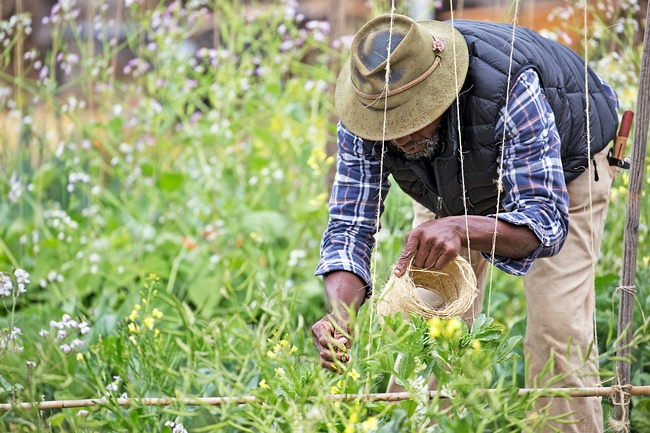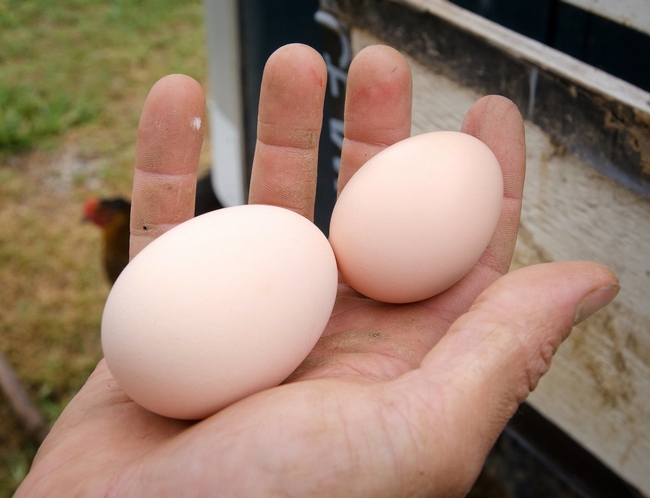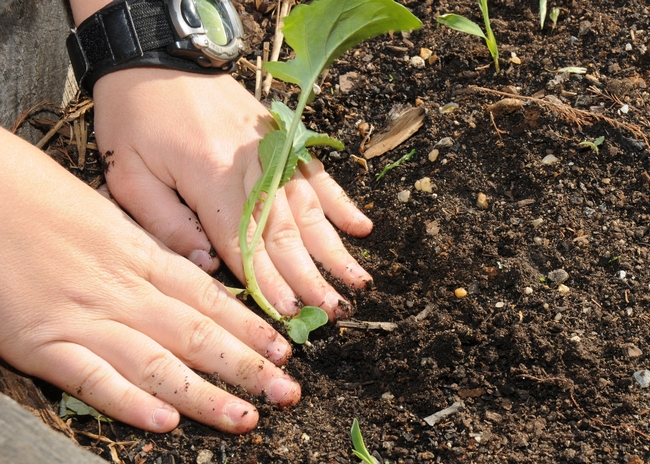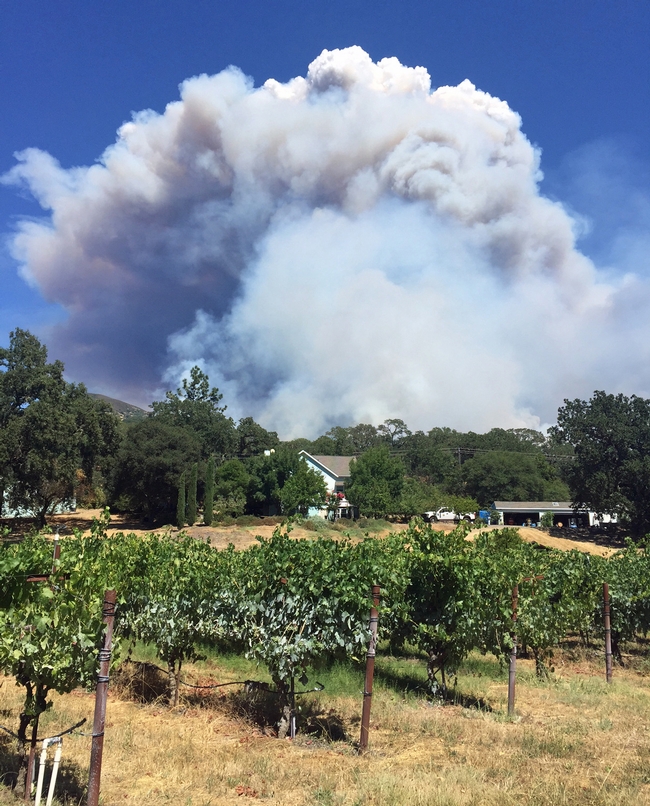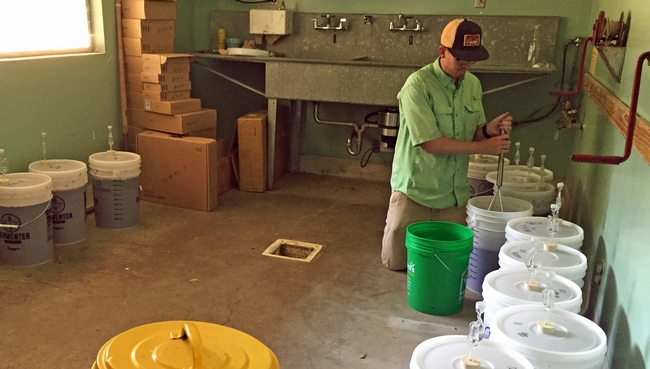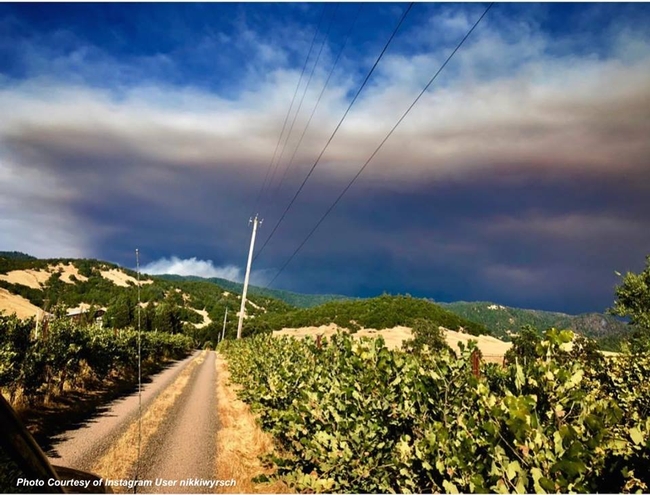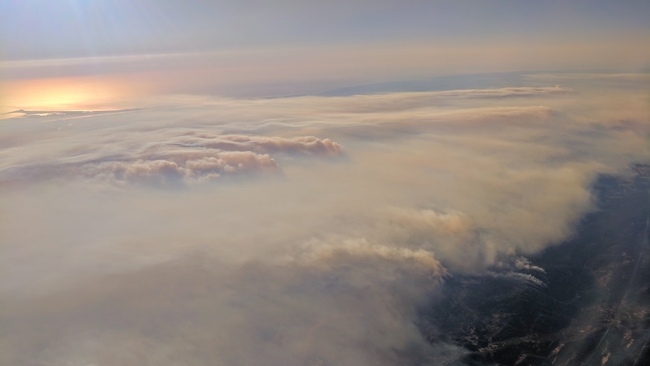
Posts Tagged: smoke
Smoke and ash from wildfire may have lingering impacts in food production
A summer of smoke and ash in many parts of California has raised questions about the safety of produce growing on farms and in the garden, eggs laid by chickens who peck around in ash-laden areas, and remediation needed to safely and effectively grow food in the future.
UC Agriculture and Natural Resources brought together experts who have researched the effects of previous fires' fallout and studied soil contaminants to share their insight in a two-hour webinar now available on YouTube.
“The No. 1 health concern during a fire is smoke inhalation, and it's been well documented that wildfire smoke can negatively impact both the heart and the lungs,” said Claire O'Brien, a pharmacology and toxicology doctoral student at UC Davis. “However, the chemicals found in the smoke don't just stay in the air. They can deposit onto plants and into soil and water.”
Although every fire is unique, some generalizations can be drawn from research conducted following previous fires. UC Cooperative Extension food systems advisor Julia Van Soelen Kim detailed a study conducted following the October 2017 wildfires in Sonoma County and across the North Bay.
With the help of UC Master Gardener and community volunteers, the researchers collected over 200 samples of homegrown collard greens, lettuces, kale and chard that were exposed to wildfire smoke and ash. A subset of the samples were analyzed by a private laboratory.
“There was very low concern about chemicals on produce,” Van Soelen Kim said. “No samples had detectable levels of lead, arsenic, mercury or chromium. And that's a huge sigh of relief.” However, analytical results vary by site, site history and by fire event, and few have pre-fire baseline data to compare with.
Van Soelen Kim said basic food-safety practices should be followed when preparing to eat food grown in a home garden, regardless of ash or smoke contamination.
“You should always wash your hands before and after harvesting, and wash your produce in running water to mitigate any kind of potential risk,” she said.
Are backyard chicken eggs safe to eat?
Another study outlined at the webinar used a similar process to determine whether there might be contaminants in the eggs laid by backyard poultry that live and feed in areas exposed to wildfire ash and smoke.
Scientists know from previous research that chickens exposed to lead in their environment can produce eggs with high lead content and that heavy metal content of ash from urban wildfires is higher than from rural wildfire.
“We combined those two pieces of research with what we know that chickens do all day: they peck at the ground for hours on end,” said Todd Kelman, a veterinarian in the School of Veterinary Medicine at UC Davis. “That makes for a pretty good hypothesis that urban wildfire could pose a risk for the production of eggs and poultry that contain heavy metals.”
Kelman and his team put out a call for eggs from backyard poultry and received samples from 344 premises in fire-affected and non-fire-affected areas of California.
Surprisingly, egg samples that contained higher lead levels came from parts of the state that were not directly impacted by ash and smoke.
“Did our data support our hypothesis that proximity to urban wildfire is a driving source for lead in eggs of backyard poultry? The answer is not so much,” Kelman said. “So, is it safe to eat eggs from your backyard poultry? We can't give you a definitive answer to that question. But we do suggest you assess your risk and reduce the risk of contamination.”
Practices that reduce the risk include keeping chickens off the ground, using a chicken feeder that prevents spillage onto the ground and making calcium readily available, for example in the form of oyster shells, because calcium can prevent the absorption of lead. Making sure that chickens are provided uncontaminated water is also an important part of risk reduction.
For confirmation on the safety backyard chickens and their eggs, lab tests for eggs are available for $60 from the California Animal Health and Food Safety Laboratory at UC Davis, or chickens may be submitted to CAHFS for necropsy.
Are soils safe for growing food after a fire?
Fire effects on soil is another consideration in burned areas, said UC Cooperative Extension urban agriculture advisor Rob Bennaton.
“Fires heat topsoil layers. They reduce the amount of living micro-organisms at the site of the burn, and also affect organic matter and nutrients. Ash deposits over time may make soils more alkaline,” he said. “As a result of these combined factors, there are temporary changes in nutrient levels and the capacity for soils to exchange nutrients for optimal plant growth and nutrition.”
With proper land care and management, soils can be remediated over time.
“It won't happen overnight. Soils were developed over millions of years,” he said.
Some ways to improve safety when gardening in fire-affected areas including keeping the soil covered with wood chips or other landscape mulch to reduce airborne soil dust. Use drip irrigation to prevent up splash onto the undersides of growing vegetables. Promote good drainage, especially at the bottom of slopes to prevent the concentration of contaminants.
Lab tests are often needed to determine the soils' post-fire characteristics. “Don't guess, but test,” Bennaton said.
The UC Master Gardener Program can provide technical assistance to help home gardeners find resources for home soil testing, he said.
Additional resources and information shared during the webinar include:
Post-fire soil resources and soil testing information
- UCCE publication on Soils in Urban Agriculture with soil testing & sampling information
- The UC ANR Healthy Soils Website, which has many resources worth reviewing.
- Tips for Interpreting Soil Analysis
- UC Master Gardener of Sonoma County 2018 workshop video “Effects of fire on soil”
Post-fire food safety
- Research on produce safety and backyard chicken egg safety after the 2017 wildfires in California is available on this web page. To view a past webinar recording with these research findings, click this link.
- Poultry wildfire resources from the UC Davis School of Veterinary Medicine:
- Best Practices for Produce Safety After Fire
- Understanding Risk: A community guide for assessing the potential health impacts of locally grown produce exposed to urban wildfire smoke
Firewise and sustainable home landscaping design in the defensible space zone
- Visit the UC Master Gardener Program of Sonoma County firewise landscaping web page.
- For a recent firewise & sustainable design and maintenance video by the Resilient Landscapes Coalition.
Impact of smoke & ash on plants
[This article was first published Nov. 3, 2020]
Smoke and ash from wildfire may have lingering impacts in food production
A summer of smoke and ash in many parts of California has raised questions about the safety of produce growing on farms and in the garden, eggs laid by chickens who peck around in ash-laden areas, and remediation needed to safely and effectively grow food in the future.
UC Agriculture and Natural Resources brought together experts who have researched the effects of previous fires' fallout and studied soil contaminants to share their insight in a two-hour webinar now available on YouTube.
“The No. 1 health concern during a fire is smoke inhalation, and it's been well documented that wildfire smoke can negatively impact both the heart and the lungs,” said Claire O'Brien, a pharmacology and toxicology doctoral student at UC Davis. “However, the chemicals found in the smoke don't just stay in the air. They can deposit onto plants and into soil and water.”
Although every fire is unique, some generalizations can be drawn from research conducted following previous fires. UC Cooperative Extension food systems advisor Julia Van Soelen Kim detailed a study conducted following the October 2017 wildfires in Sonoma County and across the North Bay.
With the help of UC Master Gardener and community volunteers, the researchers collected over 200 samples of homegrown collard greens, lettuces, kale and chard that were exposed to wildfire smoke and ash. A subset of the samples were analyzed by a private laboratory.
“There was very low concern about chemicals on produce,” Van Soelen Kim said. “No samples had detectable levels of lead, arsenic, mercury or chromium. And that's a huge sigh of relief.” However, analytical results vary by site, site history and by fire event, and few have pre-fire baseline data to compare with.
Van Soelen Kim said basic food-safety practices should be followed when preparing to eat food grown in a home garden, regardless of ash or smoke contamination.
“You should always wash your hands before and after harvesting, and wash your produce in running water to mitigate any kind of potential risk,” she said.
Are backyard chicken eggs safe to eat?
Another study outlined at the webinar used a similar process to determine whether there might be contaminants in the eggs laid by backyard poultry that live and feed in areas exposed to wildfire ash and smoke.
Scientists know from previous research that chickens exposed to lead in their environment can produce eggs with high lead content and that heavy metal content of ash from urban wildfires is higher than from rural wildfire.
“We combined those two pieces of research with what we know that chickens do all day: they peck at the ground for hours on end,” said Todd Kelman, a veterinarian in the School of Veterinary Medicine at UC Davis. “That makes for a pretty good hypothesis that urban wildfire could pose a risk for the production of eggs and poultry that contain heavy metals.”
Kelman and his team put out a call for eggs from backyard poultry and received samples from 344 premises in fire-affected and non-fire-affected areas of California.
Surprisingly, egg samples that contained higher lead levels came from parts of the state that were not directly impacted by ash and smoke.
“Did our data support our hypothesis that proximity to urban wildfire is a driving source for lead in eggs of backyard poultry? The answer is not so much,” Kelman said. “So, is it safe to eat eggs from your backyard poultry? We can't give you a definitive answer to that question. But we do suggest you assess your risk and reduce the risk of contamination.”
Practices that reduce the risk include keeping chickens off the ground, using a chicken feeder that prevents spillage onto the ground and making calcium readily available, for example in the form of oyster shells, because calcium can prevent the absorption of lead. Making sure that chickens are provided uncontaminated water is also an important part of risk reduction.
For confirmation on the safety backyard chickens and their eggs, lab tests for eggs are available for $60 from the California Animal Health and Food Safety Laboratory at UC Davis, or chickens may be submitted to CAHFS for necropsy.
Are soils safe for growing food after a fire?
Fire effects on soil is another consideration in burned areas, said UC Cooperative Extension urban agriculture advisor Rob Bennaton.
“Fires heat topsoil layers. They reduce the amount of living micro-organisms at the site of the burn, and also affect organic matter and nutrients. Ash deposits over time may make soils more alkaline,” he said. “As a result of these combined factors, there are temporary changes in nutrient levels and the capacity for soils to exchange nutrients for optimal plant growth and nutrition.”
With proper land care and management, soils can be remediated over time.
“It won't happen overnight. Soils were developed over millions of years,” he said.
Some ways to improve safety when gardening in fire-affected areas including keeping the soil covered with wood chips or other landscape mulch to reduce airborne soil dust. Use drip irrigation to prevent up splash onto the undersides of growing vegetables. Promote good drainage, especially at the bottom of slopes to prevent the concentration of contaminants.
Lab tests are often needed to determine the soils' post-fire characteristics. “Don't guess, but test,” Bennaton said.
The UC Master Gardener Program can provide technical assistance to help home gardeners find resources for home soil testing, he said.
Additional resources and information shared during the webinar include:
Post-fire soil resources and soil testing information
- UCCE publication on Soils in Urban Agriculture with soil testing & sampling information
- The UC ANR Healthy Soils Website, which has many resources worth reviewing.
- Tips for Interpreting Soil Analysis
- UC Master Gardener of Sonoma County 2018 workshop video “Effects of fire on soil”
Post-fire food safety
- Research on produce safety and backyard chicken egg safety after the 2017 wildfires in California is available on this web page. To view a past webinar recording with these research findings, click this link.
- Poultry wildfire resources from the UC Davis School of Veterinary Medicine:
- Best Practices for Produce Safety After Fire
- Understanding Risk: A community guide for assessing the potential health impacts of locally grown produce exposed to urban wildfire smoke
Firewise and sustainable home landscaping design in the defensible space zone
- Visit the UC Master Gardener Program of Sonoma County firewise landscaping web page.
- For a recent firewise & sustainable design and maintenance video by the Resilient Landscapes Coalition.
Impact of smoke & ash on plants
Urban Agriculture Soil Information
Where there is fire, is there smoke flavor in winegrapes?
UPDATED: Viticultural area is Kelsey Bench, not Kelseyville Bench.
UC Cooperative Extension study shows smoke damage to grapes not uniform across vineyards
By the time the Mendocino Complex Fires were officially contained on Oct. 4, 2018, five weeks after igniting, they had burned approximately 450,000 acres in Colusa, Lake, Glenn and Mendocino counties, making it the largest wildfire in California history, according to CalFire.
The fire not only destroyed 280 homes and other buildings, its smoke destroyed the market for wine grapes grown in vineyards near burned areas.
Fearing grapes near the fire would impart smoke flavors to the wine, some wineries rejected all fruit from nearby regions of Lake County and Potter Valley, leaving grape growers to hastily find new destinations for their 2018 crop.
“It can be difficult to determine if fruit has been compromised in quality when exposed to wildfire smoke, and whether or not smoke flavors will result in wine when fermented,” said Glenn McGourty, UC Cooperative Extension advisor in Mendocino County.
A new UC Cooperative Extension study shows wind direction and speed, temperature and a vineyard's proximity to an active fire are factors that can help growers and winemakers predict smoke damage to fruit.
“Fruit in my own vineyard, 60 feet across the street from where the fire started, had no smoke damage because the wind was blowing away from it,” McGourty said.
$41 million hit to wine grape sales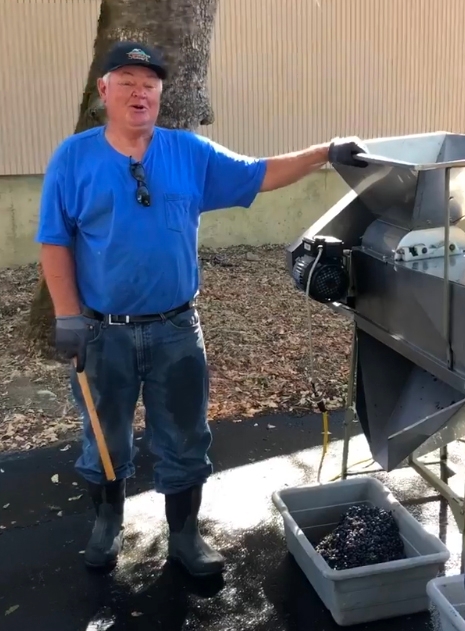
Due to the Mendocino Complex Fires, an estimated $41 million worth of winegrapes, which would have been sold at full price, were impacted – some were sold at a discount, some were sold to other customers, some were custom crushed, while some were left hanging in the vineyard, according to the Lake County Winegrape Commission and Mendocino County Farm Bureau.
The wine industry needed a scientific method of determining whether grapes could be made into a wine untainted by smoke. With funding from the Lake County Winegrape Commission, McGourty formed a workgroup of local growers and winemakers with Anita Olberholster, UC Cooperative Extension enology specialist in the Department of Viticulture & Enology at UC Davis, to research when fruit quality has been compromised.
“The need for industry standards regarding the impact of wildland smoke on winegrapes and the resulting wines has become even more pressing over the past few years,” said Debra Sommerfield, president of the Lake County Winegrape Commission.
Science showed the intensity, duration and timing of the exposure to wildfire smoke affects the grape's uptake. Generally, the closer to harvest, the greater risk to the fruit.
“Both the fruit and wine samples in our study showed a wide range of volatile phenol and glycocide concentrations, indicating that smoke damage to fruit was not uniform across the vineyards sampled,” McGourty said.
Volatile phenols and glycosides create off-flavors
Fresh smoke contains volatile phenols and glycosides that can affect fruit, but these chemicals tend to dissipate in the atmosphere in 1 to 2 hours. Vineyards close to actively burning fires and in the path of fresh smoke are most likely to be affected by smoke taint. Smoke that travels long distances is less likely to affect grapes and the wine made from the fruit.
The combination of volatile phenols and glycosides create “smoke taint” – both aromatic and tactile in the mouth. Wine drinkers may smell smoke or other off flavors and experience a drying of their mouth when high concentrations of the chemicals are present in wine.
“At lower concentrations, smoke taint reminds you of brett-affected wines,” Oberholster explained, referring to the yeast brettanomyces. “There is a shortness of fruit, a kind of dryness in the mouth that you know isn't normal. There may be barely perceptible aromas that aren't normal as well.”
Following wildfire smoke exposure, the researchers sampled fruit from 14 cabernet sauvignon vineyards around the viticultural areas of Lake County, including Upper Lake, High Valley, Big Valley, Kelsey Bench, Red Hills, Lower Lake and Guenoc Valley. As a control, fruit was also sampled from a Napa Valley vineyard that was not exposed to wildfire smoke.
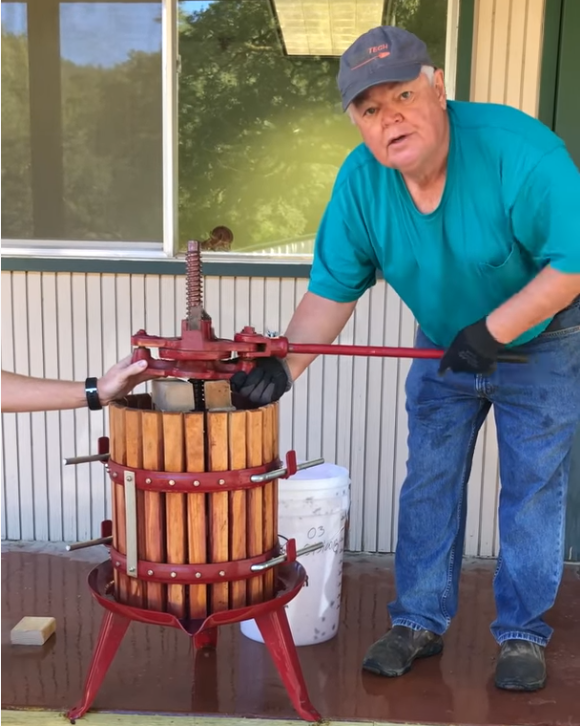
“The volatile phenols guaiacol and 4-methyl guaiacol are detected in the fruit by gas chromatography, so it is possible to sample fruit before harvest to make picking decisions,” McGourty said. “Based on our study, berry sampling and guaiacol/ 4-methyl guaiacol analysis are useful for a quick evaluation of whether or not fruit from a particular vineyard may have the presence of volatile phenols that can potentially result in smoke-affected wine.”
Testing the fruit for volatile phenols and glycosides is both expensive and not completely predictive as standards are not well defined for damage based on smoke chemical concentration, he cautioned.
These two compounds aren't the only ones that cause smoke flavors. More than 70 other compounds in forest fire smoke can also produce undesirable flavors and odors described as “like licking an ash tray, burnt garbage, a burnt potato, a campfire that has been drenched with water.”
The taste test
To assess the levels of the compounds that produce the off-flavors, Oberholster convened a panel of 14 wine industry professionals to taste the sample wines. The wine tasters detected stronger off-flavors in the wines made from riper fruit, which also contained higher concentration of smoke compounds. Less than 6 micrograms per liter of the smoke compounds were difficult for the tasters to detect, leading the researchers to conclude they will have a minimal effect on wine quality.
Smoke from a distant fire
The scientists also looked at the influence of distance from the fire and elevation on smoke taint. They found some vineyards close to the edge of fires and immediately downwind were heavily affected, with the grapes containing high concentrations of the smoke flavor-causing compounds. But they determined elevation was not a factor in smoke flavors in wines.
Wind direction and speed, temperature and vineyard proximity to active fires are highly likely affect whether there will be smoke damage to the fruit, their research showed.
“Smoke generated in the first one or two hours from a wildfire is most damaging to nearby vineyards,” McGourty said. “Even though a vineyard may be enveloped in smoke, if the source of the smoke is from a distant fire, it will probably won't seriously damage the fruit quality because most of the volatile gases are gone.”
Lake County Winegrape Commission's Sommerfield said, “Today, the results of this study are already proving to be useful in deepening our understanding of smoke and the risks it poses to grapes and wine, in enabling grape growers and winery buyers to engage in fruitful discussions and make informed decisions, and, in turn, in helping to propel the development of industry standards and protocols.”
To read more about the study by McGourty, Michael I. Jones, Oberholster and Ryan Keiffer, see the January 2020 edition of Wine Business Monthly at https://www.winebusiness.com/wbm.
“This is a great little study, the first one that I know of that takes a systems approach to evaluating the effects of wildfire smoke,” said McGourty.
Glenn McGourty, UCCE viticulture advisor for Mendocino County, describes for Hannah Bird the UC project to analyze the effect of wildfire smoke on winegrapes.
Farmers concerned about crops tainted by wildfire smoke
When wildfires send smoke into farmland, orchards and vineyards, growers are concerned about the impact of the tainted air on their crops, reported Giuseppe Ricapitio in the Union Democrat.
"It's grapes we worry about the most," said Susie Kocher, UC Cooperative Extension forestry and natural resources advisor. "In the past, there have been bad years when there was a lot of smoke where grapes were on the vine and wineries had to produce the smoky wine because of that effect."
The article said grapes are unlike other agricultural products, in that the skins are permeable. Free volatile phenols created by burning wood become part of the grape itself.
"It isn't something you can wash off," said Ron Harms of Yosemite Cellars winery.
After the 2013 Rim Fire, the winery produced a "Rim Fire Blend," which was successful. However, wine drinkers' palettes differ in terms of their smoke sensitivity. "Some people just can't tolerate (smoke flavor) at all," Harms said.
Other agricultural crops may not be impacted by a blanket of smoke, and some may even benefit. Before Europeans settled in California, Native Americans living in the wilderness would set fires to burn understory brush that built up in the forests.
"It's part of the ecological knowledge of native tribes that smoke is good for trees," Kocher said. "That's not a scientifically proven thing. We don't know."
Autumn wildfire set up research on 'smoke taint' in wine
With the value of wine riding on a delicate balance of aroma and flavor, the impact of winegrapes' exposure to smoke from a wildfire could have significant economic consequences. Last fall's Northern California wildfires sent smoke wafting over an experimental vineyard in Napa Valley, giving scientists the opportunity to study the interplay of smoke and wine quality, reported Jeff Quackenbush in the North Bay Business Journal.
"The moment the smoke started, my phone started ringing off the hook," said Anita Olberholster, UC Cooperative Extension viticulture and enology specialist. “I quickly realized how thin the data is I need to base recommendations on.”
The fires near the UC Davis vineyard provided the perfect experimental platform. Olberholster and her research team sprang into action to start a research project on the fly. Remaining grapes on smoke-exposed vines were picked, loads of commercially grown grapes deemed too questionable for commercial wineries were accepted. Over the past five months, small batches of wine were made from the grapes.
“They all have different levels of smoky character,” Olberholster said. “Some on the nose are actually quite pleasant and not smoky, but the aftertaste is the problem. All of them, even if in small amounts, had that ‘old smoke,' ‘ashtray,' ‘new smoke' aftertaste. It all depends on how sensitive you're going to be at it.”
The scientists are now looking for a process that will remove the smoky compounds, as little as possible of anything else.

